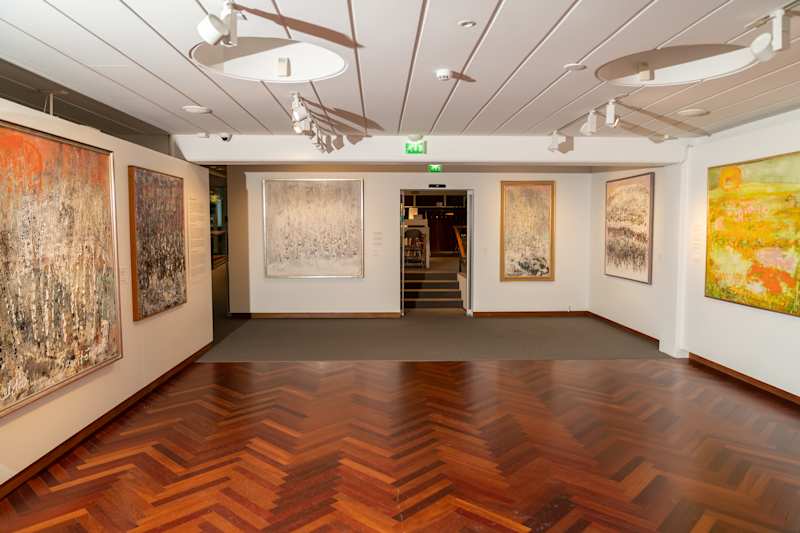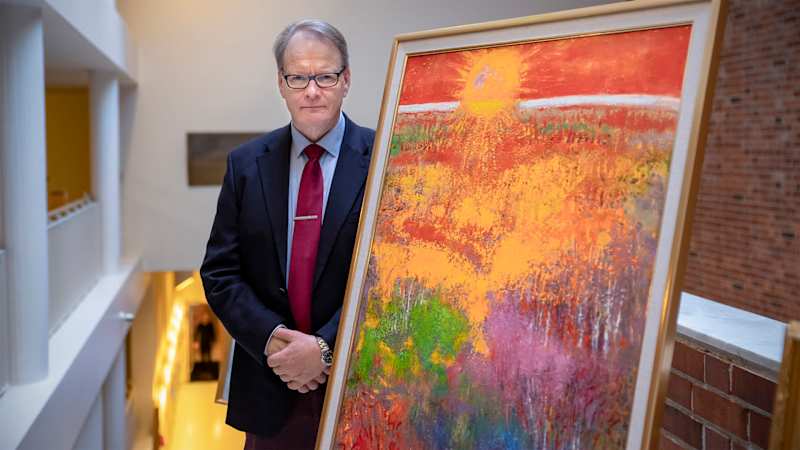Suspected Särestöniemi forgery revealed in the middle of an exhibition – it is common to select works based on a photograph

Museum directors and curators tell us that it is normal to check the photograph of a work requested for an exhibition. Forgeries are in circulation and it is often difficult to establish authenticity.
The opening of the Didrichsen Art Museum’s highly recommended *Maailmanranta – Reidar Särestöniemi 100 years* exhibition revealed a nasty surprise. One of the works on display turned out to be a suspected forgery.
The museum director also explained that the painting was borrowed from a private individual and that the selection was made on the basis of a photograph. The discovery of the suspected forgery was also a shock for the owner of the work.
Several museums tell Yle that selecting a work for an exhibition on the basis of a photograph is not ideal, but often dictated by practice. All the experts speak in general terms.
Suddenly, proven and detecting the authenticity of a work of art may seem simple. In reality, it is very difficult and sometimes even impossible. Today, it is possible to conduct highly exported technical studies for a work of art. However, they are expensive, and museums often do not have the opportunity to invest in individual works coming to the exhibition.
Laura Kuurne says that top experts are also people and mistaken. In addition, there are cheaters in the art world, like any other field.
The collections of art museums and foundations have counterfeits in Finland and elsewhere, without anyone knowing anything about them before the work begins to be investigated for some reason, Kuurne says.
Särestöniemi is a favourite not only of the public but also of counterfeiters
Reidar Särestöniemi is one of the most famous and beloved artists in Finland. His art is particularly featured this year to celebrate the 100th anniversary of Särestöniemi’s birth.
Särestöniemi is also popular with fake painting and its great popularity and its great popularity.
The Turku Art Museum may also borrow works from private art owners. Then, according to Immonen, we are acting on a case -by -case basis. Some private collectors can be rely on more strongly than others. Immonen also does not like to be excluded that in some cases the loan is based on a photo.
\”I don’t think there is anything different about it,\” says Koskamo.
In addition to the photo, the museums check the work of the work of the work. Provenience refers to the story of a work of art, its journey from the artist to the current owner. The older the work is, the longer the longer distance from one owner, it has usually gone. Provenance can also be a clatha, or fake too.

The Särestöniemi Museum has the best expertise to evaluate the authenticity of Reidar Särestöniemi’s works. Also * World Beach -Reidar Särestöniemi, who organized the 100th anniversary * exhibition, used the knowledge. In connection with the construction of the exhibition, the museum consults the Särestöniemi Museum from a few works. Didrichsen did not ask anything about a suspected work.
It was the expert of the Särestöniemi Museum that found that the * silver -bearded tendon descends from the fell * into a suspected counterfeit.
– This is a nasty incident, but when there are so many counterfeits on the move, this can happen. Most importantly, Didrichsen reacted, Koskamo says.
The National Gallery is usually the one in Finland that can prove the authenticity of the work. The resources of the National Gallery are limited, and museums cannot, on light grounds, ask for authenticity. In addition, it may take several months to study the work. Museum schedules are rarely so flexible that this could be done.
The National Gallery reports that it has not in any way participate in the Curation of the Särestöniemi exhibition at the Didrichsen Art Museum.
